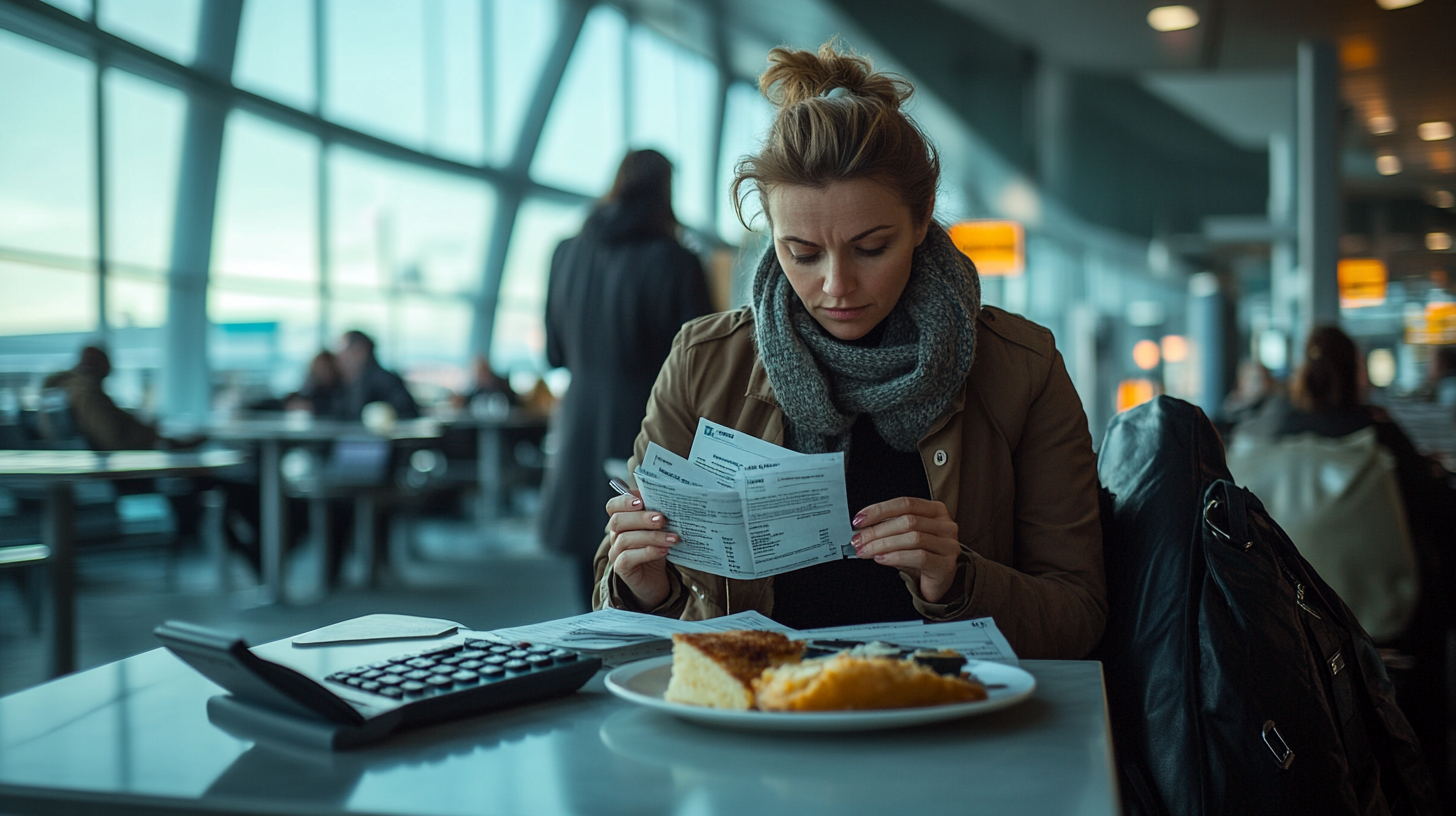Business Travel Meal Deductions: What Flyers Need to Know

1. The 50% Rule: Standard for Most Business Meals

I’ve spent countless hours in seats that give me a clear view of the bustling world below—and I’ve often observed travelers puzzling over how much of their in-flight or airport-lounge meals they can write off. Under IRS guidelines, most business meals on the road are limited to a 50% deduction, provided they’re ordinary and necessary for your trade or business. This means my mid-flight sandwich is only half-deductible if I’m truly working while cruising at 35,000 feet. I’m a big believer in keeping receipts tidy: jotting down the purpose of the meeting or who I spoke with can make a world of difference if questions arise down the line.
According to IRS Publication 463, you must be able to show the meal’s direct relevance to business. In my own travels, I’ve watched people scramble to explain lavish expenses. The general rule is simple: a $100 appetizer might raise eyebrows. The more reasonable the expense, the safer that 50% deduction remains. By planning ahead, staying within moderate budgets, and clearly documenting the who, what, when, and why, I find it much easier to stay on the right side of the tax code.
2. Exceptions That Bump It Up to 100%

Whenever I’m at a conference, I’m also on the lookout for opportunities when meals can be deducted at 100%. According to Internal Revenue Code Section 119, if meals are furnished for the employer’s convenience (like a compulsory working lunch), the full cost can be written off. I’ve been to training sessions where meals were included; that small detail can save you from fiddling around with partial deductions. If you want to keep your ledger organized, log these 100% eligible expenses in a separate category so you can easily pull them up during tax time.
Some businesses also host employee appreciation events—think team-building dinners or company picnics. I’ve seen how these gatherings can create a more positive work environment while also offering a tax break at 100% for the meals. Where I come from, it’s a win for everyone: employees feel valued, and businesses get extra deduction mileage. Just remember, keep everything properly documented: who attended, the nature of the event, and how it benefits the broader employee group.
3. Pandemic-Era Relief and Its Effects

Most of us remember the special legislation during 2021 and 2022 when restaurant meal expenses were temporarily 100% deductible. It was a move aimed at helping dining establishments recover from the pandemic downturn. I saw firsthand how this rule encouraged more business lunches and travel stops at local eateries, offering a morale boost to small businesses trying to stay afloat.
Although that window has closed, it highlights how quickly tax laws can change—and underscores why I make it a habit to periodically check with a tax professional. A recent report by the National Restaurant Association noted that many independent restaurants are still feeling the ripple effects of those policy shifts. Whether or not new relief measures come down the pipeline, those who travel often should stay in the loop. I like to reference reliable sources—like updated IRS announcements or expert commentary—so I’m always prepared for the next regulatory curveball.
4. Documentation and Why It Matters

I’ve learned that good recordkeeping is half the battle when it comes to deductions. The IRS typically wants the basics: date, location, attendees, and the all-important business purpose. I’ve seen travelers who meticulously stash receipts in neatly labeled envelopes, while others prefer scanning them with a smartphone app. I’ll admit, in the moment it can feel tedious—but it pays off. In a recent industry survey, over 60% of small-business owners said well-organized documentation saved them time and money during audits.
In my own experience, having separate budget lines for 50% and 100% meal deductions has reduced frustration come tax season. Technology helps too. Tools like TurboTax Self-Employed can generate quick cost breakdowns, highlighting which expenses qualify for partial or full deductions. My rule of thumb? If you’re not sure whether something is deductible, keep a record anyway. It’s far better to have extra documentation than to realize it’s missing when you need it most.
5. More Travel Deductions on the Radar

Meals aren’t the only travel expenses worth tracking. I always pay close attention to transportation costs, from airline tickets to rental cars. In 2025, the standard mileage rate is set at $0.67 per mile, and vehicle depreciation limits depend on your vehicle’s acquisition date. I’ve met road warriors who’ve overlooked these deductions simply because they didn’t realize how quickly mileage can add up. Not me—I keep a driver’s log to quickly tally miles for business trips away from my tax home. It helps ensure I don’t miss out on valid write-offs.
The IRS also expects travelers to mind the difference between legitimate business travel and personal side trips. I can’t justify writing off expenses for a visit to a friend’s beach house if it’s more personal fun than work. It’s a balanced approach: enjoy your journey, but be transparent about when business begins or ends. I’ve found that the more honest and well-organized I am, the easier it is to breeze through any audit or review.
Final Thoughts

In my view, staying informed and paying attention to the details can make your travel even more rewarding. When you understand how IRS deductions work, you’re not only saving money—you’re also freeing up headspace to focus on the reasons you love to fly in the first place. Whether it’s catching that perfect window view or networking in a new locale, being prepared means fewer worries about the financial fine print.
My biggest tip is to be proactive. If you have an upcoming conference or big trip, plan out how you’ll track meals and other expenses. Then you can settle into your seat with confidence, knowing you’re well-equipped to handle the tax side of things. Organized records, clear objectives, and a dash of practicality go a long way in ensuring you get the best possible deductions without overstepping any boundaries.
Ryder’s Take
From what I’ve gathered in all my seat strategizing, well-researched planning is the key to getting the most out of business travel deductions. Embrace the practicality of thorough recordkeeping, but don’t let it overshadow the joys of discovering new places and experiences.
We all have our own takeoff rituals, and mine includes making sure I’m not missing any tricks to help me travel smarter. If you ask me, it’s part of the fun—navigating the skies while also maximizing my tax benefits.
Seat5A is where you can find more insights and keep your travels inspired and informed.






